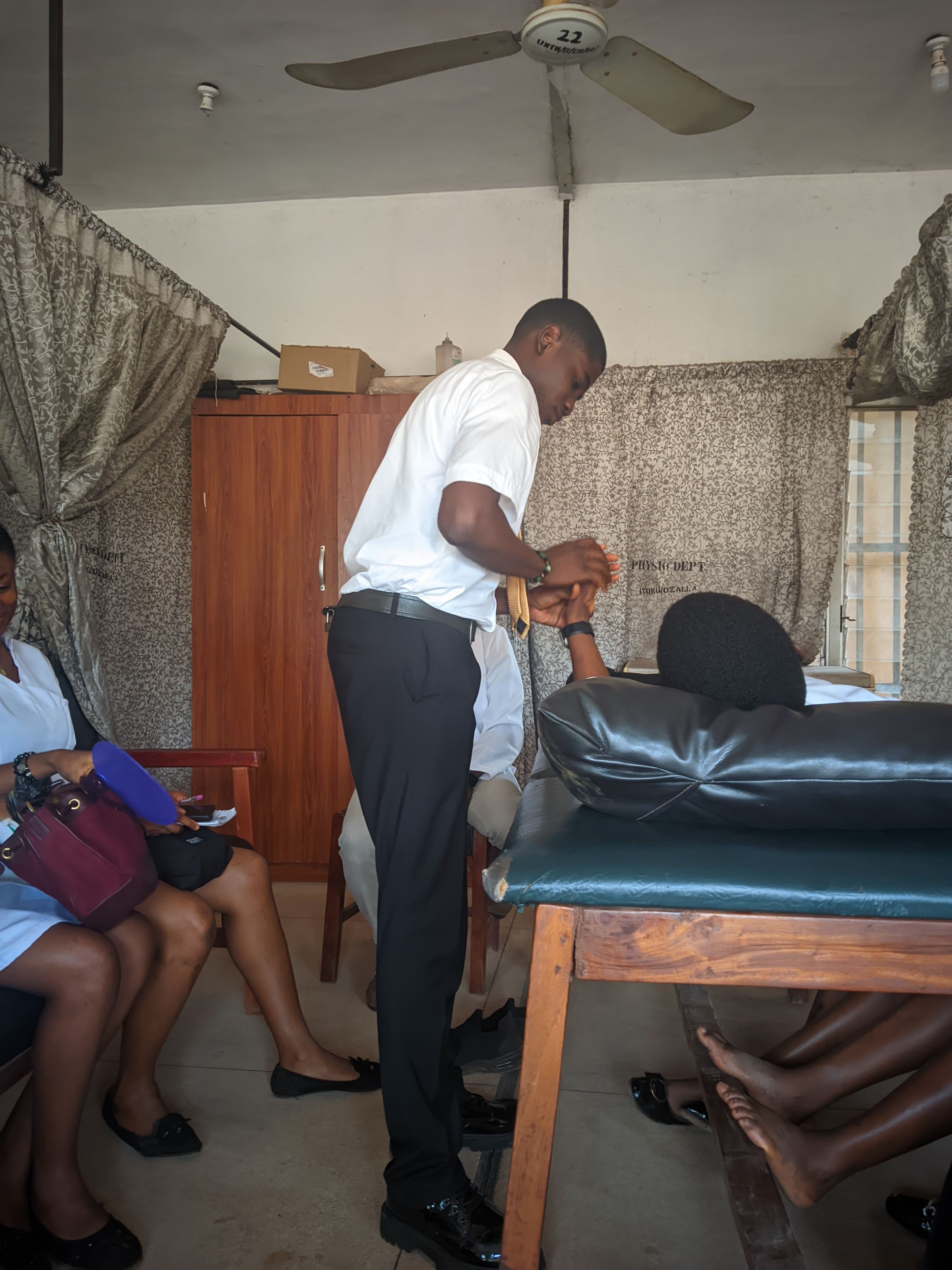Hello friends, good morning. How are you guys doing? Today I want us to learn a new thing from my blog which is pelvic symphysis diastasis. It is a very important topic in clinical settings and it is more common in women although men are not left out.

Pubic symphysis diastasis was not something I thought I would ever encounter so soon during my clinical postings but when I did this condition totally changed the way I looked at pelvic related injuries. Yes I can remember hearing about it during my lectures. According to my lecturer during our class, he said that this is a condition where the pubic symphysis separates beyond normal limits often due to childbirth, trauma or high impact injuries from accidents. When the theory was going on, I felt the pain this condition could leave on the patient. Seeing an actual patient dealing with it gave me a whole new perspective.
During the examination in the clinical cubicle one of the things I noticed was that there was this widening of her pubic symphysis; this shows a clinical sign of the diastasis. When she tried to lift one leg while lying down (we called the single leg stand test) her pain increased dramatically. When we added a slight pressure on the pubic region, it was uncomfortable to her. The more I observed the patient, the more I realized how much this condition affected her activities of daily living. We students could read that it was not about pain alone, but about how every little movement she made made her uncomfortable and unpredictable for her.
After assessment, our chief listed out the goals and the intervention for our management. Which focused on stabilizing the pelvis and reducing pain. The first step we began with was education, we educated her to understand what was really going on in her body. We also encourage her to avoid activities that might increase strain on the pelvis like wide leg movements standing on one leg on sudden twisting movements. We also brought in pelvic binder which helps to provide external support hence holding the pelvis bone in the most stable position.
We as well proceeded with strengthening her core muscle through exercises. You know that the pelvis relies on surrounding muscles for support, activating the deep abdominal muscle especially the transverse abdominis was very necessary for her if she must regain her stability. We started with simple pelvic tilt and isometric contractions of her inner thighs why she was lying down.
Because of her pains and discomfort, she was refusing to do these exercises at first, but over time we built her confidence.
Again we could not neglect how important breathing techniques would be to her condition. We put her through on how to engage her core with proper breathing patterns and surely , this made her movement more controlled and less painful. The session was enjoyable as we were all engaged to know how the end would be. And gradually we progressed to glute bridge, from this to side lying leg lift and gradual weight bearing exercises while ensuring she wasn't overloading the pelvis.
Throughout the sessions I noticed something that was very important and this was to support her psychology which matters just as much as the physical therapy. I noticed how frustrated she was feeling, like her body had betrayed her already. Every time she struggled with a movement, I could see the doubt in her eyes because it was just obvious. The questions which she would ask us was, would she ever work normally again? would she be able to care for her baby without pain?
Glad to let you know that after weeks of her therapy, I am happy that she improved significantly. The pain which was her major concern reduced, her walk was becoming smoother. And she no longer felt like her pelvis was going to fall apart with every step she made. I must let you know that this was not just an overnight recovery but seeing her regain her confidence and independence made us appreciate how impactful physiotherapy is..
You may assume that this type of injury is not a common injury when compared to injuries like fracture or dislocation but it happens and it can be life threatening.
So this is just it, my friends. I hope you learn something new from my experience with this patient. Thank you for reading my blog and thank you for staying till this very end.